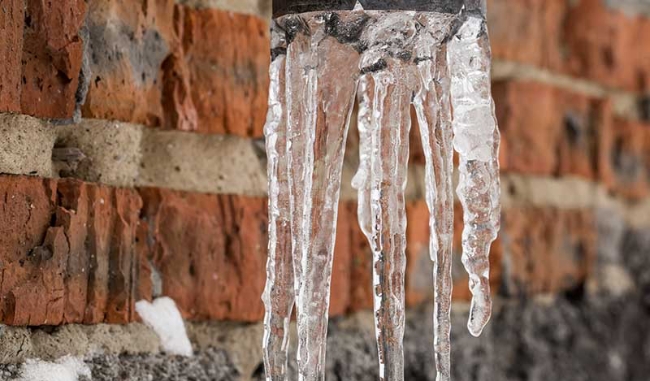Avoiding Your Pipes from Freezing: Best Methods
Avoiding Your Pipes from Freezing: Best Methods
Blog Article
Listed here below you will find more exceptional resources all about How To Avoid Freezing Pipes.

Winter can damage your plumbing, particularly by freezing pipes. Right here's exactly how to avoid it from occurring and what to do if it does.
Intro
As temperature levels decrease, the danger of frozen pipelines increases, potentially bring about pricey fixings and water damages. Comprehending how to prevent frozen pipes is crucial for property owners in cool environments.
Avoidance Tips
Insulating prone pipes
Cover pipelines in insulation sleeves or utilize heat tape to safeguard them from freezing temperatures. Focus on pipes in unheated or exterior areas of the home.
Home heating methods
Maintain indoor areas adequately warmed, specifically areas with pipes. Open up cabinet doors to permit warm air to distribute around pipes under sinks.
Just how to identify icy pipes
Look for decreased water flow from faucets, uncommon odors or sounds from pipelines, and noticeable frost on exposed pipes.
Long-Term Solutions
Structural adjustments
Consider rerouting pipes far from exterior walls or unheated locations. Include extra insulation to attics, cellars, and crawl spaces.
Upgrading insulation
Purchase premium insulation for pipelines, attic rooms, and walls. Proper insulation aids preserve consistent temperature levels and reduces the danger of icy pipelines.
Safeguarding Outdoor Pipes
Yard hoses and exterior faucets
Disconnect and drain yard hoses prior to wintertime. Set up frost-proof faucets or cover outdoor faucets with protected caps.
Understanding Icy Pipelines
What creates pipelines to freeze?
Pipes freeze when revealed to temperature levels listed below 32 ° F (0 ° C) for extended periods. As water inside the pipelines ices up, it expands, putting pressure on the pipe walls and possibly causing them to break.
Dangers and problems
Frozen pipes can cause water interruptions, building damage, and costly repair work. Ruptured pipelines can flood homes and cause substantial architectural damage.
Indicators of Frozen Piping
Identifying icy pipes early can prevent them from breaking.
What to Do If Your Pipelines Freeze
Immediate actions to take
If you believe frozen pipes, maintain faucets open up to soothe stress as the ice melts. Utilize a hairdryer or towels soaked in hot water to thaw pipelines slowly.
Verdict
Preventing icy pipelines calls for proactive procedures and fast responses. By comprehending the causes, indications, and preventive measures, homeowners can safeguard their pipes throughout winter.
5 Ways to Prevent Frozen Pipes
Drain Outdoor Faucets and Disconnect Hoses
First, close the shut-off valve that controls the flow of water in the pipe to your outdoor faucet. Then, head outside to disconnect and drain your hose and open the outdoor faucet to allow the water to completely drain out of the line. Turn off the faucet when done. Finally, head back to the shut-off valve and drain the remaining water inside the pipe into a bucket or container. Additionally, if you have a home irrigation system, you should consider hiring an expert to clear the system of water each year.
Insulate Pipes
One of the best and most cost-effective methods for preventing frozen water pipes is to wrap your pipes with insulation. This is especially important for areas in your home that aren’t exposed to heat, such as an attic. We suggest using foam sleeves, which can typically be found at your local hardware store.
Keep Heat Running at 65
Your pipes are located inside your walls, and the temperature there is much colder than the rest of the house. To prevent your pipes from freezing, The Insurance Information Institute suggests that you keep your home heated to at least 65 degrees, even when traveling. You may want to invest in smart devices that can keep an eye on the temperature in your home while you’re away.
Leave Water Dripping
Moving water — even a small trickle — can prevent ice from forming inside your pipes. When freezing temps are imminent, start a drip of water from all faucets that serve exposed pipes. Leaving a few faucets running will also help relieve pressure inside the pipes and help prevent a rupture if the water inside freezes.
Open Cupboard Doors
Warm your kitchen and bathroom pipes by opening cupboards and vanities. You should also leave your interior doors ajar to help warm air circulate evenly throughout your home.

Do you like reading about Prevent Frozen Pipes ? Create a comment directly below. We would be glad to know your views about this blog. In hopes to see you back again soon. For those who enjoyed reading our page kindly consider to pass it around. Thanks for being here. Revisit us soon.
Contact Us Report this page